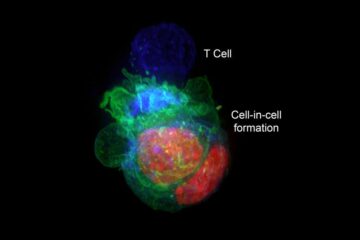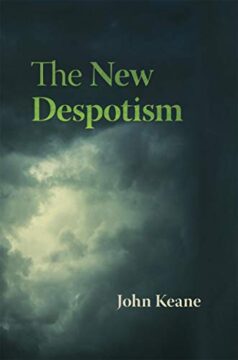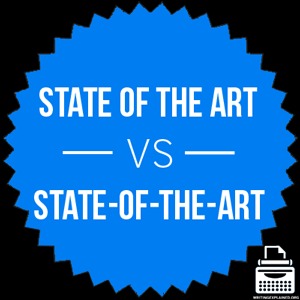Category: Recommended Reading
Wednesday Poem
To the Woman I saw Today Who Wept in Her car
I get it.
We are strangers,
but I know the heart is a hive
and someone has knocked yours
from its high branch in your chest
and it lays cracked and splayed,
spilling honey all over
the ground floor of your gut
and the bees inside
that you’ve trained
over the days and years
to stay put, swarm
the terrain of your organs,
yes,
right here in traffic,
while we wait for the light to change.
I get it.
How this array of metal and plastic
tends to go womb room
once the door shuts,
and maybe you were singing
only moments before
you got the call,
or remembered that thing
you had tucked back and built
such sturdy scaffolding all around,
and now here it comes to knock
you adrift with only your steering
wheel to hold you up.
Or, maybe today
was just a tough day
and the sunlight
and warm weather
and blossoming limbs
and smiling pedestrians
waiting for their turn to cross
are much too much to take
when you think of all that’s left
to do, and here you are,
a reed stuck in the mud
of a rush hour intersection,
with so very many hours left to go.
Woman,
I know you.
I know how that thing
when left unattended
will show up as a typhoon
at your front door
demanding to be let in
or it will take
the whole damn house with it.
I know this place too.
I get it.
But because we are strangers,
because you did not see me see you,
my gaze has no more effect
than a phantom that stares at the living.
And yet, I want you to know that
today, in the hive of my heart,
there is room enough
for you.
by Bianca Lynne Spriggs
from Split This Rock
A Devious Cellular Trick Cancers Can Use to Escape Your Immune System
Gina Kolata in The New York Times:
 In a surprise discovery, researchers found that cells from some types of cancers escaped destruction by the immune system by hiding inside other cancer cells. The finding, they suggested in an article published this month in the journal eLife, may explain why some cancers can be resistant to treatments that should have destroyed them. The research began when Yaron Carmi, an assistant professor at Tel Aviv University, and Amit Gutwillig, then a doctoral student studying in his lab, were studying which T cells of the immune system might be the most potent in killing cancers. They started with laboratory experiments that examined treatment-resistant melanoma and breast cancers in mice, studying why an attack by T cells that were engineered to destroy those tumors did not obliterate them.
In a surprise discovery, researchers found that cells from some types of cancers escaped destruction by the immune system by hiding inside other cancer cells. The finding, they suggested in an article published this month in the journal eLife, may explain why some cancers can be resistant to treatments that should have destroyed them. The research began when Yaron Carmi, an assistant professor at Tel Aviv University, and Amit Gutwillig, then a doctoral student studying in his lab, were studying which T cells of the immune system might be the most potent in killing cancers. They started with laboratory experiments that examined treatment-resistant melanoma and breast cancers in mice, studying why an attack by T cells that were engineered to destroy those tumors did not obliterate them.
…Every time, though, he saw some giant cells that remained after the T cells had done their job. “I wasn’t sure what it was, so I thought I would take a closer look,” he said. The giant cells turned out to be cancer cells that were harboring other cancer cells, protecting them from destruction. Once the cancer cells escaped to their hiding places, T cells could not get to them, even if the immune system killed the cancer cells that were serving as cellular bunkers. “It was like seeing the devil,” Dr. Carmi said. Cancer cells, he added, can remain in hiding “for weeks or months.”
More here.
FDA approves groundbreaking treatment for advanced melanoma
From NBC News:
 The Food and Drug Administration on Friday approved a new cancer therapy that could one day transform the way a majority of aggressive and advanced tumors are treated. The treatment, called Amtagvi, from Iovance Biotherapeutics, is for metastatic melanoma patients who have already tried and failed other drugs. It’s known as TIL therapy and involves boosting the number of immune cells inside tumors, harnessing their power to fight the cancer.
The Food and Drug Administration on Friday approved a new cancer therapy that could one day transform the way a majority of aggressive and advanced tumors are treated. The treatment, called Amtagvi, from Iovance Biotherapeutics, is for metastatic melanoma patients who have already tried and failed other drugs. It’s known as TIL therapy and involves boosting the number of immune cells inside tumors, harnessing their power to fight the cancer.
It’s the first time a cellular therapy has been approved to treat solid tumors. The drug was given a fast-track approval based on the results of a phase 2 clinical trial. The company is conducting a larger phase 3 trial to confirm the treatment’s benefits. The therapy’s list price — the price before insurance and other potential discounts — is $515,000 per patient. “This is going to be huge,” said Dr. Elizabeth Buchbinder, a senior physician at Dana-Farber Cancer Institute in Boston. Melanoma is “not one of those cancers where there’s like 20 different” possible treatments, she said. “You start running out of options fast.”
More here.
Tuesday, April 2, 2024
The last crimes of Caravaggio
Michael Prodger in The New Statesman:

In May 1606, Caravaggio’s rackety life caught up with him. He already had a long list of misdemeanours against his name. He had been twice arrested for carrying a sword without a permit; put on trial by the Roman authorities for writing scurrilous verses about a rival, Giovanni Baglione (or “Johnny Bollocks” according to the poems); arrested for affray and assault, in one incident being injured himself (his testimony to the police survives: “I wounded myself with my own sword when I fell down these stairs. I don’t know where it was and there was no one else there”); arrested again for smashing a plate of artichokes in the face of a waiter; for throwing stones and abusing a constable (telling him he could “stick [his sword] up his arse”); and for smearing excrement on the house of the landlady who had had his belongings seized in payment of missed rent. There were more incidents, all meticulously recorded in the Roman archives.
Eventually, however, he overstepped so far that even his lofty clerical patrons, notably cardinals Del Monte and Borghese, could no longer help him.
More here.
The Long Road Back for the Port of Baltimore
Gabrielle Gurley in The American Prospect:
 The Port of Baltimore was on a roll. In February, Maryland Gov. Wes Moore celebrated new record traffic at the vessel and terminal hub and installed a new executive director, Jonathan Daniels, at the Maryland Port Administration. The port already was an established leader in auto imports and exports, thanks to its closer proximity to the Midwest than other ports, and led the country in passenger vehicle shipping for 13 consecutive years.
The Port of Baltimore was on a roll. In February, Maryland Gov. Wes Moore celebrated new record traffic at the vessel and terminal hub and installed a new executive director, Jonathan Daniels, at the Maryland Port Administration. The port already was an established leader in auto imports and exports, thanks to its closer proximity to the Midwest than other ports, and led the country in passenger vehicle shipping for 13 consecutive years.
The container ship crash and collapse of Baltimore’s Francis Scott Key Bridge pushed those milestones aside in seconds. Maryland faces a grim recovery mission for the men killed, and what promises to be one of the country’s most closely watched infrastructure projects at one of the East Coast’s busiest ports.
More here.
But what is a GPT? Visual intro to Transformers
Why Do Authoritarians Win?
William E. Scheuerman in the Boston Review:
 Of course, autocrats always tout their achievements, or insist that their regimes rest on the will of the people. Even Nazi Germany claimed popular legitimacy, a racist and anti-Semitic Volks-sovereignty. Soviet apologists and fellow travelers labeled Stalin’s Eastern European vassal states “people’s democracies.” The contemporary narrative seems depressingly familiar. Even so, the specter of powerful autocratic states that parasitically mimic democracy, while in reality eviscerating its core, should alarm us. Are democracy’s rivals indeed gaining ground? And, what precisely is different this time?
Of course, autocrats always tout their achievements, or insist that their regimes rest on the will of the people. Even Nazi Germany claimed popular legitimacy, a racist and anti-Semitic Volks-sovereignty. Soviet apologists and fellow travelers labeled Stalin’s Eastern European vassal states “people’s democracies.” The contemporary narrative seems depressingly familiar. Even so, the specter of powerful autocratic states that parasitically mimic democracy, while in reality eviscerating its core, should alarm us. Are democracy’s rivals indeed gaining ground? And, what precisely is different this time?
John Keane’s illuminating study of what he dubs the new despotism persuasively argues that its momentum in China, Hungary, Iran, Russia, Saudi Arabia, Singapore, the UAE, and many other countries offers evidence both for its viability today and its longevity in times to come.
More here.
“A Passage to India” on Its 100th Birthday
Sameer Pandya at the LARB:
 THIS YEAR marks the 100th anniversary of the publication of E. M. Forster’s A Passage to India. I’ve never loved the novel, nor have I been able to let go of it. And so I started reading it again as I began a passage of my own to India—where I lived until I was eight—with my wife and our two teenage sons.
THIS YEAR marks the 100th anniversary of the publication of E. M. Forster’s A Passage to India. I’ve never loved the novel, nor have I been able to let go of it. And so I started reading it again as I began a passage of my own to India—where I lived until I was eight—with my wife and our two teenage sons.
Across his work, but particularly in Passage, Forster uses miscommunication, or what he calls “muddles,” as a productive source of narrative tension and propulsion. “Except for the Marabar Caves—and they are twenty miles off—the city of Chandrapore presents nothing extraordinary.” The opening line sets up the location of the novel’s primary action in a cave that produces only an echo—the absence of real communication.
A young Englishwoman named Adela Quested arrives in British India with Mrs. Moore, her prospective mother-in-law, so that Adela can determine if she and Mrs. Moore’s son, Ronny, are the right match.
more here.
I Love You, Maradona
Rachel Connolly at the Paris Review:
 While reading Maradona’s autobiography this past winter, I found that every few pages I would whisper or write in the margins, “I love you, Maradona.” Sadness crept up on me as I turned to the last chapter, and it intensified to heartbreak when I read its first lines: “They say I can’t keep quiet, that I talk about everything, and it’s true. They say I fell out with the Pope. It’s true.” I was devastated to be leaving Maradona’s world and returning to the ordinary one, where nobody ever picks a fight with the Pope.
While reading Maradona’s autobiography this past winter, I found that every few pages I would whisper or write in the margins, “I love you, Maradona.” Sadness crept up on me as I turned to the last chapter, and it intensified to heartbreak when I read its first lines: “They say I can’t keep quiet, that I talk about everything, and it’s true. They say I fell out with the Pope. It’s true.” I was devastated to be leaving Maradona’s world and returning to the ordinary one, where nobody ever picks a fight with the Pope.
I started reading El Diego: The Autobiography of the World’s Greatest Footballer, ghostwritten by Daniel Arcucci and translated to English by Marcela Mora y Araujo. He said reading it was the most fun he’d had with a book. I came to El Diego with basically no knowledge of Maradona or even of soccer. I would have said I hated soccer actually. I hate the buzzing noise the crowds make on the TV. But from the very first page I found Maradona’s voice so addictive and original that reading El Diego felt like falling in love.
more here.
El Diego
Tuesday Poem
Untitled
Late one night in my office
one mile from home, I stared
out my window in an insomniac haze.
Remember how crazed I used to be?
Turns out eight hours of sleep
is the only vision quest I need.
Anyhow, as I stared out the window,
I saw a transformer sizzle
And spark down the block.
Accidental and gorgeous fireworks.
Then that transformer boomed
and turned the neighborhood
Into one large and powerless room.
In five minutes, the closed supermarket
parking lot below me was crowded
with dozens of black teens and young
adults.
A sudden party! And the bass that shook
their car windows shook my office
window!
Then three minutes after the party started,
six police cars pulled into the parking lot.
Oh, shit! Oh, shit! I wondered if somebody
was going to get shot! But the cops stayed
in their cars, content to just be reminders
of more dangerous possibilities,
while the black teens behaved like teens.
Twenty minutes later, the power came back.
I was surprised it had been fixed
so quickly. Soon enough, the black kids
vacated the lot. And the cops did too.
It was one of those city nights where
Bad things could have happened.
But it was good things that shook the air.
The music and car engines and laughter
singing only about love, not disaster.
by Sherman Alexie
from You Don’t Have To Say You Love Me
Little Brown, 2017
What It Means if You Have Borderline High Cholesterol—And What to Do About It
Sarah Klein in Time Magazine:
 Almost 25 million adults in the U.S. have high cholesterol, which puts them at a higher risk for a heart attack or stroke in the next decade. But a much bigger portion have what’s called borderline high cholesterol, an in-between place that’s not quite high, but not quite within a normal range. Here’s what to know about borderline cholesterol.
Almost 25 million adults in the U.S. have high cholesterol, which puts them at a higher risk for a heart attack or stroke in the next decade. But a much bigger portion have what’s called borderline high cholesterol, an in-between place that’s not quite high, but not quite within a normal range. Here’s what to know about borderline cholesterol.
High cholesterol is defined as having a total cholesterol number of 240 mg/dL or above. Someone has borderline cholesterol, meanwhile, when their total cholesterol is in the 200 to 239 range.
“We create these thresholds—which are admittedly somewhat artificial—to classify people so we can understand if we need to do further analysis or assessment to understand their risk for cardiovascular disease,” says Dr. Donald Lloyd-Jones, past president of the American Heart Association and a professor of cardiology and the chair of preventive medicine at Northwestern University Feinberg School of Medicine. There’s some flexibility: Some people may be completely healthy with a total cholesterol level of 235, while others could be at risk at 205. It depends on a person’s other risk factors. But broadly speaking, these thresholds help doctors make decisions about patient care.
More here.
Scientists made a six-legged mouse embryo — here’s why
Sara Reardon in Nature:
 This six-legged animal isn’t an insect: it’s a mouse with two extra limbs where its genitals should be. Research on this genetically engineered rodent, which was published on 20 March in Nature Communications1, has revealed a way in which changes in DNA’s 3D structure can affect how embryos develop. Developmental biologist Moisés Mallo, at the Gulbenkian Science Institute in Oeiras, Portugal, and his colleagues were studying one of the receptor proteins, Tgfbr1, in a signalling pathway that is involved in many aspects of embryonic development. The scientists inactivated the Tgfbr1 gene in mouse embryos about halfway through development to see how the change affected spinal-cord development. Then, Mallo’s graduate student, Anastasiia Lozovska, came to his office to tell him she’d found that one of the bioengineered embryos had genitals that looked similar to two extra hind limbs. Her finding sent the research down an unexpected path. “I didn’t choose the project, the project chose me,” Mallo says.
This six-legged animal isn’t an insect: it’s a mouse with two extra limbs where its genitals should be. Research on this genetically engineered rodent, which was published on 20 March in Nature Communications1, has revealed a way in which changes in DNA’s 3D structure can affect how embryos develop. Developmental biologist Moisés Mallo, at the Gulbenkian Science Institute in Oeiras, Portugal, and his colleagues were studying one of the receptor proteins, Tgfbr1, in a signalling pathway that is involved in many aspects of embryonic development. The scientists inactivated the Tgfbr1 gene in mouse embryos about halfway through development to see how the change affected spinal-cord development. Then, Mallo’s graduate student, Anastasiia Lozovska, came to his office to tell him she’d found that one of the bioengineered embryos had genitals that looked similar to two extra hind limbs. Her finding sent the research down an unexpected path. “I didn’t choose the project, the project chose me,” Mallo says.
Researchers have long known that, in most four-limbed animals, both the external genitalia (penis or clitoris) and hind limbs develop from the same primordial structures. When Mallo’s team looked further into the six-legged mouse phenomenon, they found that Tgfbr1 directs these structures to become either genitalia or limbs by altering the way that DNA folds in the structure’s cells. Deactivating the protein changed the activity of other genes, resulting in extra limbs and no true external genitalia.
More here.
Sunday, March 31, 2024
A reconsideration of Robert Frost at 150
Ed Simon in The Hedgehog Review:
 Despite the stereotype of being the Norman Rockwell of verse, Robert Frost’s standing, even sixty-one years after his death, remains blue-chip, still perhaps the most famous American poet among the general public. Frost’s work remains anthologized and interpreted, and taught in secondary and undergraduate classrooms; his lyrics among the handful that can be expected to be namedropped as a reader’s favorite poem (two roads and all of that). If anything, Frost has suffered from the albatross of presumed accessibility. Among the luminaries of American Modernism, Ezra Pound was experimental, T.S. Eliot cerebral, H.D. hermetic, Langston Hughes revolutionary, Wallace Stevens incandescent, and William Carlos Williams visionary, but Frost is readable. David Orr writes in his excellent book-length close reading The Road Not Taken: Finding America in the Poem Everyone Loves and Almost Everyone Gets Wrong (2015) that Frost is a poet whose “signature phrases have become so ubiquitous, so much a part of everything from coffee mugs to refrigerator magnets to graduation speeches” that it can become easy to forget the man who penned such phrases.
Despite the stereotype of being the Norman Rockwell of verse, Robert Frost’s standing, even sixty-one years after his death, remains blue-chip, still perhaps the most famous American poet among the general public. Frost’s work remains anthologized and interpreted, and taught in secondary and undergraduate classrooms; his lyrics among the handful that can be expected to be namedropped as a reader’s favorite poem (two roads and all of that). If anything, Frost has suffered from the albatross of presumed accessibility. Among the luminaries of American Modernism, Ezra Pound was experimental, T.S. Eliot cerebral, H.D. hermetic, Langston Hughes revolutionary, Wallace Stevens incandescent, and William Carlos Williams visionary, but Frost is readable. David Orr writes in his excellent book-length close reading The Road Not Taken: Finding America in the Poem Everyone Loves and Almost Everyone Gets Wrong (2015) that Frost is a poet whose “signature phrases have become so ubiquitous, so much a part of everything from coffee mugs to refrigerator magnets to graduation speeches” that it can become easy to forget the man who penned such phrases.
More here.
Sean Carroll: The Coming Transition in How Humanity Lives
Sean Carroll in Preposterous Universe:
 Technology is changing the world, in good and bad ways. Artificial intelligence, internet connectivity, biological engineering, and climate change are dramatically altering the parameters of human life. What can we say about how this will extend into the future? Will the pace of change level off, or smoothly continue, or hit a singularity in a finite time? In this informal solo episode, I think through what I believe will be some of the major forces shaping how human life will change over the decades to come, exploring the very real possibility that we will experience a dramatic phase transition into a new kind of equilibrium.
Technology is changing the world, in good and bad ways. Artificial intelligence, internet connectivity, biological engineering, and climate change are dramatically altering the parameters of human life. What can we say about how this will extend into the future? Will the pace of change level off, or smoothly continue, or hit a singularity in a finite time? In this informal solo episode, I think through what I believe will be some of the major forces shaping how human life will change over the decades to come, exploring the very real possibility that we will experience a dramatic phase transition into a new kind of equilibrium.
More here.
A defining feature of modern activism: “The ever-present, neurotic need to be recognized and affirmed”
Julia Friedman in Quillette:
 On my last visit to the National Gallery in London in October 2022, during Frieze Week, the wall beneath Vincent Van Gogh’s iconic Sunflowers still displayed noticeable palm-sized daubs of unmatched gray paint. The day before, Just Stop Oil protestors Phoebe Plummer, and Anna Holland had glued themselves to that wall, after dousing the painting with Heinz tomato soup. Their timing (Frieze Week) and venue for this instance of performative activism was not incidental. It pitted the purported excess of attention given to art—here represented by Van Gogh’s masterpiece—against the scarcity of “food” and “justice” for those affected by rampant inflation. In this zero-sum scenario, a choice had to be made between culture and human beings: “Are you more concerned about the protection of a painting, or the protection of our planet and people?” demanded Plummer, as she knelt beneath the soup-stained still life, one palm already affixed to the wall behind her. The efficacy of this attack, news of which quickly spread across both legacy and social media, derived from the cult status of Sunflowers: its cultural cachet, its recognizability and ubiquity. Yet Plummer and Holland saw it only as a prop for acting out their scripted and rehearsed demonstration.
On my last visit to the National Gallery in London in October 2022, during Frieze Week, the wall beneath Vincent Van Gogh’s iconic Sunflowers still displayed noticeable palm-sized daubs of unmatched gray paint. The day before, Just Stop Oil protestors Phoebe Plummer, and Anna Holland had glued themselves to that wall, after dousing the painting with Heinz tomato soup. Their timing (Frieze Week) and venue for this instance of performative activism was not incidental. It pitted the purported excess of attention given to art—here represented by Van Gogh’s masterpiece—against the scarcity of “food” and “justice” for those affected by rampant inflation. In this zero-sum scenario, a choice had to be made between culture and human beings: “Are you more concerned about the protection of a painting, or the protection of our planet and people?” demanded Plummer, as she knelt beneath the soup-stained still life, one palm already affixed to the wall behind her. The efficacy of this attack, news of which quickly spread across both legacy and social media, derived from the cult status of Sunflowers: its cultural cachet, its recognizability and ubiquity. Yet Plummer and Holland saw it only as a prop for acting out their scripted and rehearsed demonstration.
To the casual observer, this stagy use of an artwork as a backdrop for an ideological statement might have little in common with another, much subtler case when a different National Gallery painting served as a prop. This time there was no super glue, tomato soup, or declarative recitations, and no need to involve security.
More here.
Mohsin Hamid: Cracks in Concrete
Mohsin Hamid at Georgetown University Global Dialogues:
 When it comes to our understanding of the world, we are all like the blind men in the story of the blind men and the elephant. We each know the elephant from our own small vantage point, and what we know is partial and prone to distortions. It is from speaking to one another, reading one another, that a more accurate picture appears. Unfortunately, too often, those we speak to and read come from places very close to ours, whether physically or ideologically, and so the elephant we see together looks to us uncannily like something else, like a wall or a weapon or a trophy, perhaps. I would like to describe the elephant, the world, as I perceive it from my vantage point in Lahore, Pakistan, in the early months of the year 2024. I do this in the hope that each of us, in describing it, helps all of us see it a little better.
When it comes to our understanding of the world, we are all like the blind men in the story of the blind men and the elephant. We each know the elephant from our own small vantage point, and what we know is partial and prone to distortions. It is from speaking to one another, reading one another, that a more accurate picture appears. Unfortunately, too often, those we speak to and read come from places very close to ours, whether physically or ideologically, and so the elephant we see together looks to us uncannily like something else, like a wall or a weapon or a trophy, perhaps. I would like to describe the elephant, the world, as I perceive it from my vantage point in Lahore, Pakistan, in the early months of the year 2024. I do this in the hope that each of us, in describing it, helps all of us see it a little better.
The first thing that strikes me about the world is that it is has become poisonous. We cannot breathe. From November until February the blue sky is hidden behind a low ceiling of grey. This is not from clouds but from smoke. It is uncanny to take a flight in these months, to burst only seconds after take-off into the blindingly bright light and see not a city but a grey blanket below.
More here.
Cancer signs could be spotted years before symptoms
Robin McKie in The Guardian:
 Scientists at a recently opened cancer institute at Cambridge University have begun work that is pinpointing changes in cells many years before they develop into tumours. The research should help design radically new ways to treat cancer, they say. The Early Cancer Institute – which has just received £11m from an anonymous donor – is focused on finding ways to tackle tumours before they produce symptoms. The research will exploit recent discoveries which have shown that many people develop precancerous conditions that lie in abeyance for long periods.
Scientists at a recently opened cancer institute at Cambridge University have begun work that is pinpointing changes in cells many years before they develop into tumours. The research should help design radically new ways to treat cancer, they say. The Early Cancer Institute – which has just received £11m from an anonymous donor – is focused on finding ways to tackle tumours before they produce symptoms. The research will exploit recent discoveries which have shown that many people develop precancerous conditions that lie in abeyance for long periods.
“The latency for a cancer to develop can go on for years, sometimes for a decade or two, before the condition abruptly manifests itself to patients,” said Prof Rebecca Fitzgerald, the institute’s director.
“Then doctors find they are struggling to treat a tumour which, by then, has spread through a patient’s body. We need a different approach, one that can detect a person at risk of cancer early on using tests that can be given to large numbers of people.” One example of this is the cytosponge – a sponge on a string – which has been developed by Fitzgerald and her team. It is swallowed like a pill, expands in the stomach into a sponge and is then pulled up the gullet collecting oesophagus cells on the way. Those cells that contain a protein, called TFF3 – which is found only in precancerous cells – then provide an early warning that a patient is at risk of oesophageal cancer and needs to be monitored. Crucially, this test can be administered simply and on a wide scale.
More here.
State of the Art
Greg Jackson in Harper’s Magazine:
 Great tracts of culture, notably the arts, arise to give sanctuary and form to private truth within a public context. They maintain a bridge between personal and social convictions—the solitary testimony of the soul and the necessary agreements of the group. This realm of culture helps a person feel less alone in their private experience, which is always partly at odds with, or unacknowledged by, the official story. By awakening people to the legitimacy of their feelings, art gives them confidence that their experience is not an anomalous, lonely event, but something others share in, and that it may be reasonable, therefore, to question the tyranny of public opinion.
Great tracts of culture, notably the arts, arise to give sanctuary and form to private truth within a public context. They maintain a bridge between personal and social convictions—the solitary testimony of the soul and the necessary agreements of the group. This realm of culture helps a person feel less alone in their private experience, which is always partly at odds with, or unacknowledged by, the official story. By awakening people to the legitimacy of their feelings, art gives them confidence that their experience is not an anomalous, lonely event, but something others share in, and that it may be reasonable, therefore, to question the tyranny of public opinion.
Politics’ colonization of culture in contemporary America has greatly damaged this public lifeline to the private psyche. In a Cato Institute survey conducted last summer, 62 percent of Americans reported being afraid to air their views in public. The numbers were highest among conservatives, but a majority of liberals and moderates agreed with the premise as well. Only “strong liberals” still felt comfortable speaking up, although even they had become decidedly more apprehensive since 2017.
The consistent surprise that as many people seem to like Donald Trump as actually do—his routine outperformance of polls and forecasts—is the sort of thing one might expect in an environment where people are hesitant to express themselves in public. But we may each measure for ourselves the toleration of our beliefs by judging how often we wonder in our hearts whether stating them in public is perilous. Where, when public opinion rules, does private truth find an outlet?
More here.
